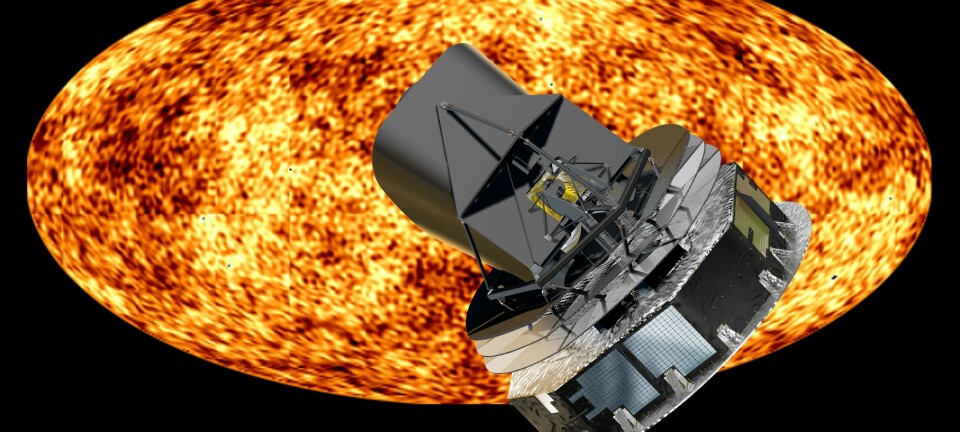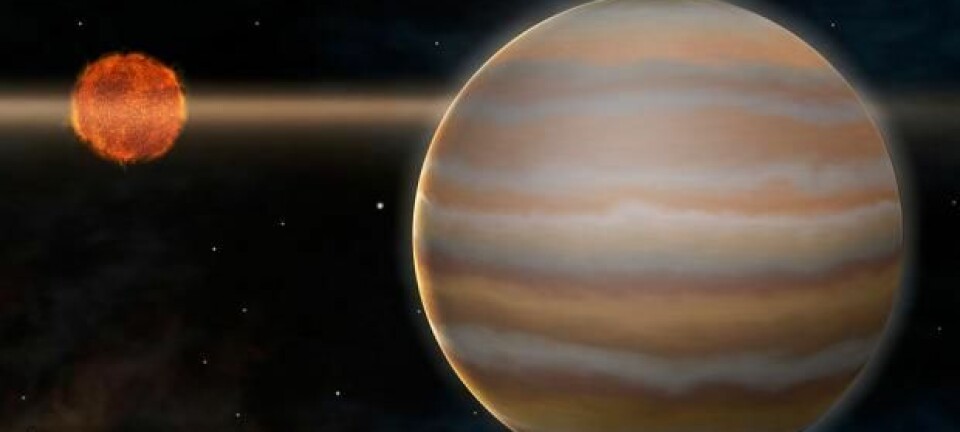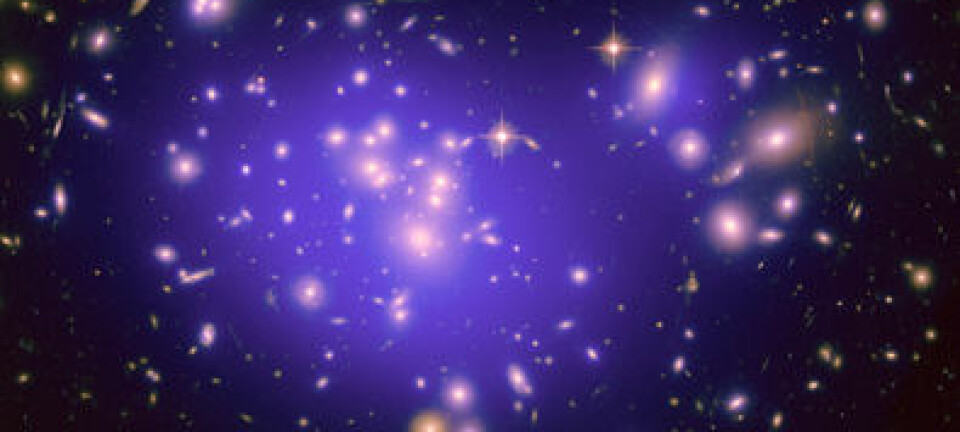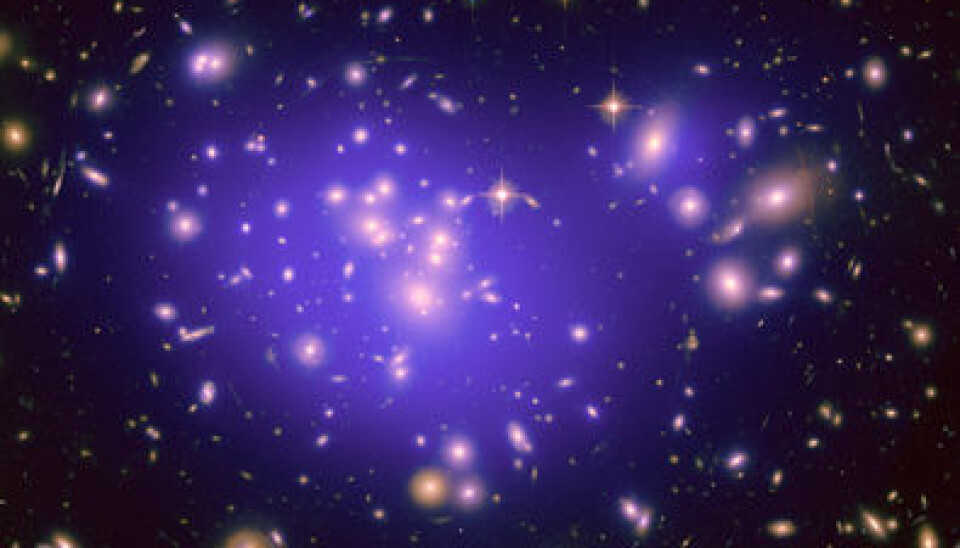
Galaxy clusters support Einstein’s relativity theory
Cosmologists have used distant galaxy clusters to put Einstein’s relativity theory to the ultimate test. The theory passed with distinction.
Albert Einstein’s general theory of relativity, proposed a century ago, has now received additional support after Danish cosmologists have analysed new observations of galaxy clusters.
The studies show that light passing through the fields of gravity of gigantic clusters of galaxies behaves precisely as the theory predicts. The findingshave just been published in the prestigious scientific journal Nature.
”We can demonstrate that Einstein’s general theory of relativity is true on an extremely large scale in the universe,” says Radek Wojtak, the leading scientist behind the study. He is a postdoc at the Dark Cosmology Centre at the University of Copenhagen’s Niels Bohr Institute..
Sun’s gravity effect red-shifts light
Einstein’s general theory of relativity states that all planets, stars, galaxies and clusters bend the surrounding space because of their gravitational field, which not only affects other objects but also light.
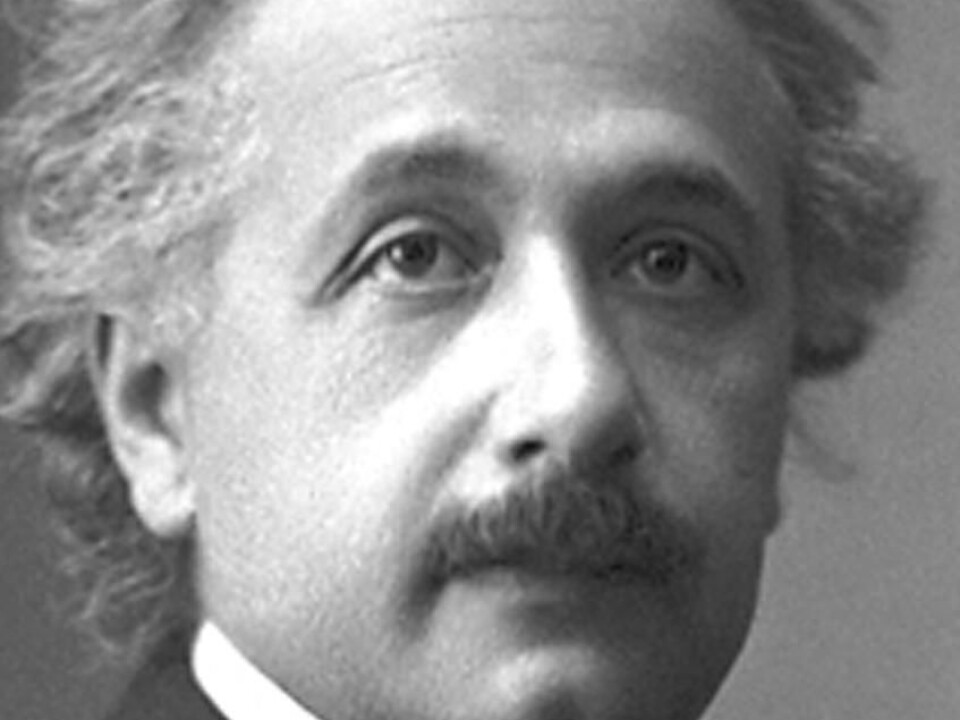
Wojtak tested Einstein’s general theory of relativity using a method developed in the 1960s. Many astronomers have tried to carry out the test but have so far only been successful using the light we receive from the Sun. At greater distances, the tests failed because the telescopes were not good enough to detect any effect.
The test aims to confirm a phenomenon called gravitational red-shift, which the general theory of relativity says arises when light passes through the field of gravity of a heavy object, such as a galaxy cluster.
This passage consumes some of its energy. It lengthens the wavelength and reduces the frequency of the light, causing the light to shift towards the red end of the spectrum.
Light from the centre of galaxy clusters gets red-shifted
This red-shift phenomenon was measured long ago on light from the Sun. The advantage of using measurements involving the Sun is that its light is well documented and it is relatively easy to determine whether its light actually becomes red-shifted as predicted by the theory. These measurements were carried out in the 1960s and they matched the predictions of the general theory of relativity quite precisely – with uncertainties as low as 1:100,000.
In his study, Wojtak looked at some galaxy clusters much further into space, millions of light years away.
Initially he focused on the light from a single cluster and found that the light from the centre of the galaxy cluster does indeed get red-shifted when it passes through the cluster’s enormous gravitational field, in close harmony with the general theory of relativity.
However, the light emitted from the edge of the cluster was not red-shifted to the same extent – which makes sense, as it does not pass through the cluster’s field of gravity.
Studied 8,000 galaxy clusters
Wojtak knew that measuring an individual galaxy cluster was not enough to confirm Einstein’s general theory of relativity – the predicted red-shift was less than the measurement uncertainty arising from the use of a telescope.
He knew that his results would only be sufficiently convincing if he could show the same effect for several thousand galaxy clusters spread over a greater area in the universe.
This prompted Wojtak to repeat the measurement procedures for a total of 8,000 galaxy clusters – and the results also showed that the light was red-shifted in precisely the way that the general theory of relativity predicted.
”The agreement between our observations and Einstein’s theory is happily precise,” he says.
Breakthrough also confirms dark matter
The new study not only confirms the general theory of relativity but also supports the idea that the universe includes a quantity of mysterious dark matter that amounts to about six times as much material as all the other particles that we know about.
Einstein’s general theory of relativity itself says nothing about the existence of dark matter, but astronomers have had to add the phenomenon to the theory’s list of the materials and forces in the universe to explain why the universe is expanding with accelerating speed.
Astronomers call this ‘the cosmological model’. To date, they have only managed to couple Einstein’s general theory of relativity to the cosmological model to explain the observed expansion of the universe. Einstein’s general theory of relativity has not been confirmed in itself.
This has frustrated researchers because as long as– the theory has not been substantiated, both the relativity theory and the cosmological model could in principle be incorrect.
”Now that we’ve confirmed Einstein’s general theory of relativity on the grand scale, this directly strengthens the theory that the universe contains a large amount of dark matter,” says Wojtak.
Dark energy is difficult to calculate
Many cosmologists have had problems accepting the theory of dark energy and dark matter. Both make it extremely difficult to calculate the equations of the general theory of relativity.
Several theorists have tried to prepare alternative gravitation theories to explain the expansion of the universe without being forced to include the two mysterious phenomena, says Steen H. Hansen, associate professor at the Dark Cosmology Centre, who co-authored the study together with Radek Wojtak and Professor Jens Hjorth.
Until now, two different classes of alternative gravitation models – one avoiding dark matter, the other avoiding dark energy – have paralleled Einstein’s general theory of relativity.
”What Radek shows is that the theories that circumvent dark matter do not agree with the observations,” says Hansen.
Space probe to study more galaxy clusters
Now, Einstein’s general theory of relativity and the alternative theories that circumvent dark energy – termed F(R) – must do battle. The result will not be known until 2019, when the European Space Agency plans to launch the space probe Euclid to study even more galaxy clusters than Radek Wojtak did, and with greater precision.
”These data will probably make it possible to put an end to either F(R) or the general theory of relativity,” says Hansen. “I believe that the general theory of relativity will win. But if you don’t care about how ugly F(R) is as a theory, that it contains many terms that are difficult to calculate, then it remains a contender.”
Read the article in Danish at videnskab.dk
Translated by: Michael de Laine
Scientific links
- Catalogue of galaxy clusters 1: GMBCG catalogue with SDSS galaxy clusters
- Catalogue of galaxy clusters 2: SDSS database
- Scientific article in Nature: "Gravitational redshift of galaxies in clusters as predicted by general relativity" Nature 477, 567–569 (29 September 2011) doi:10.1038/nature10445”
